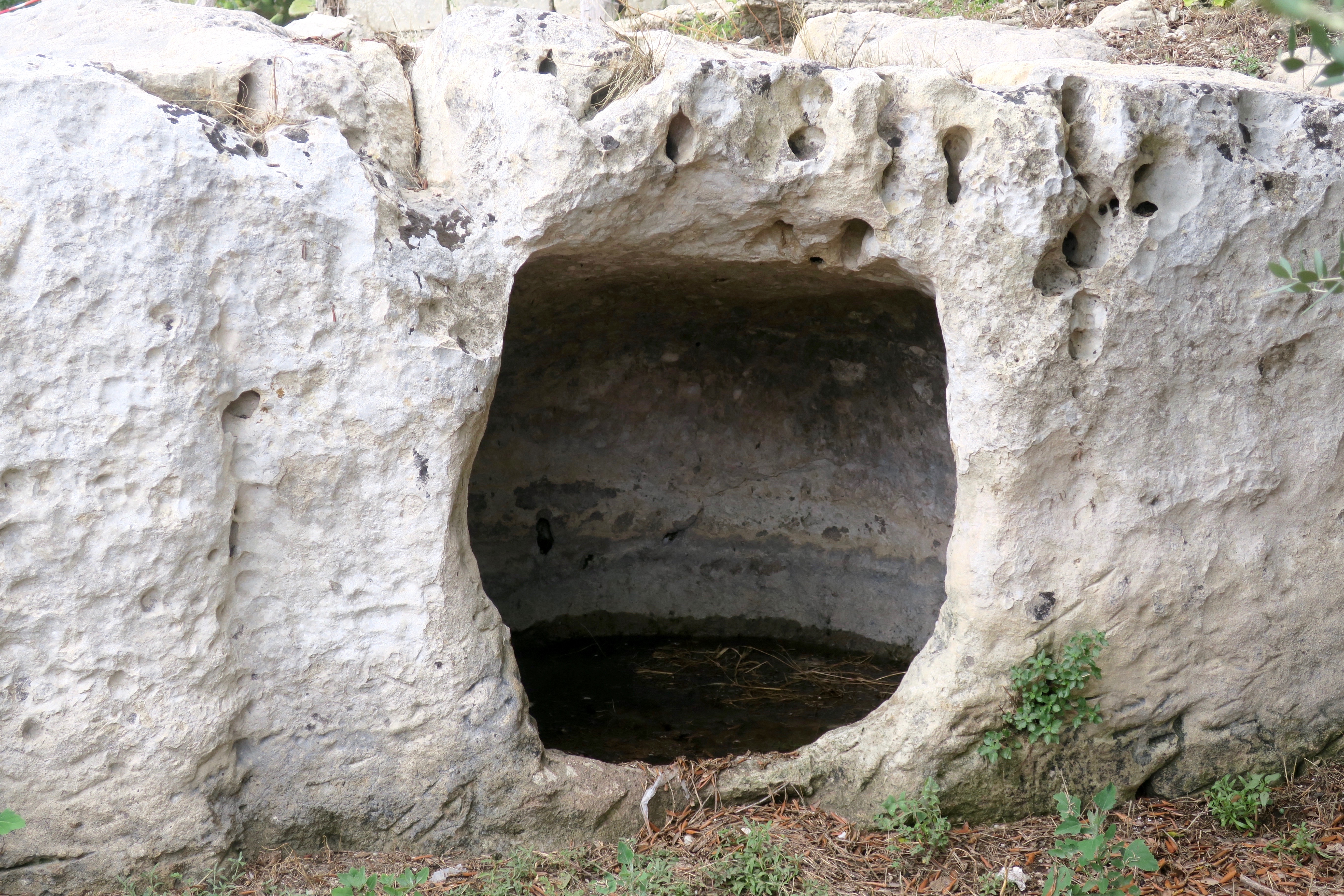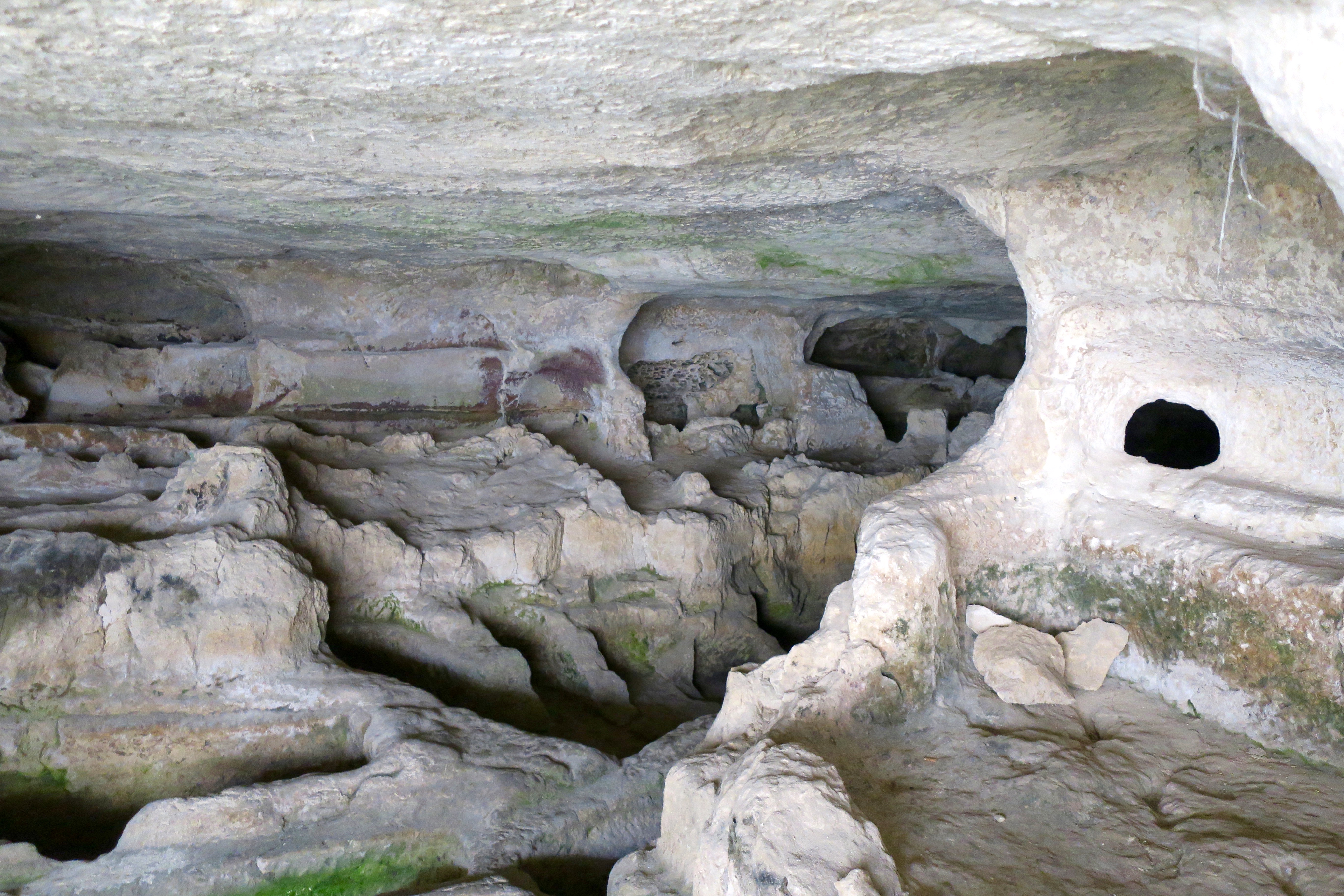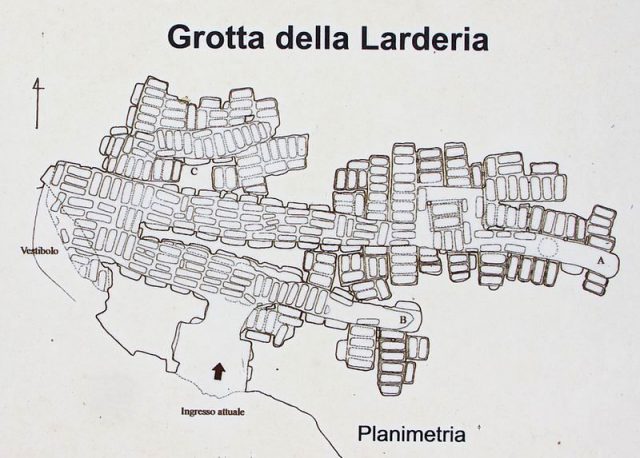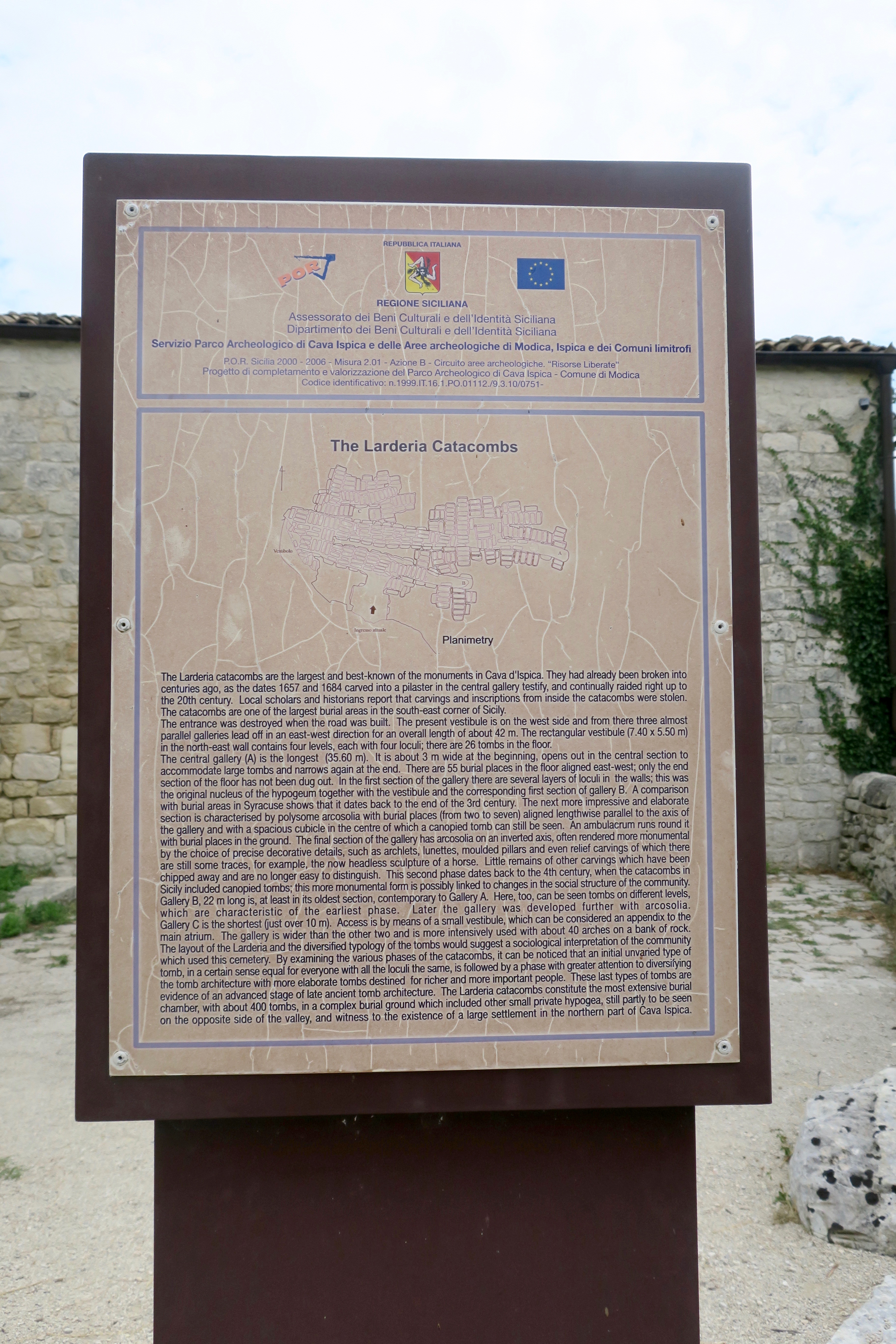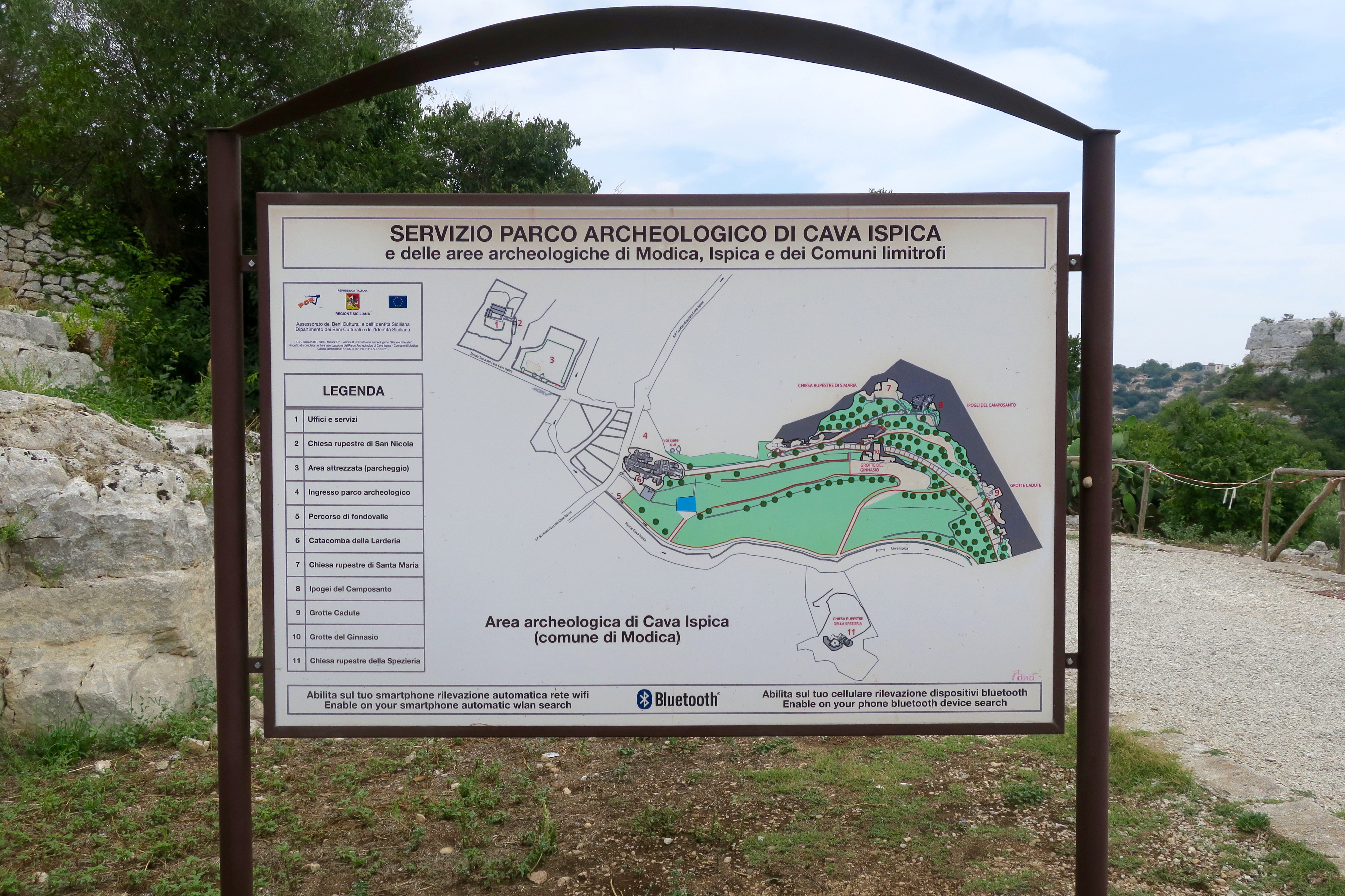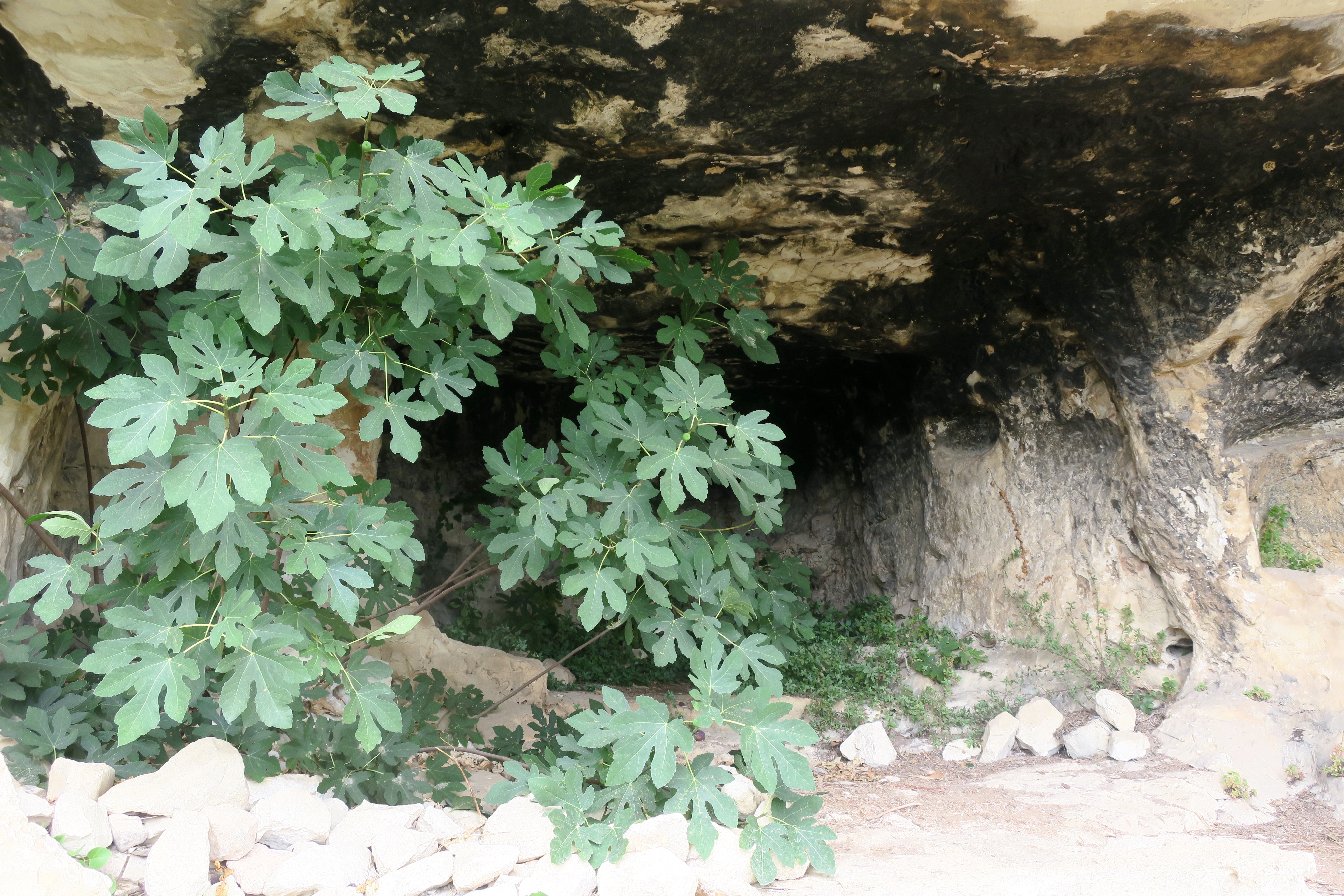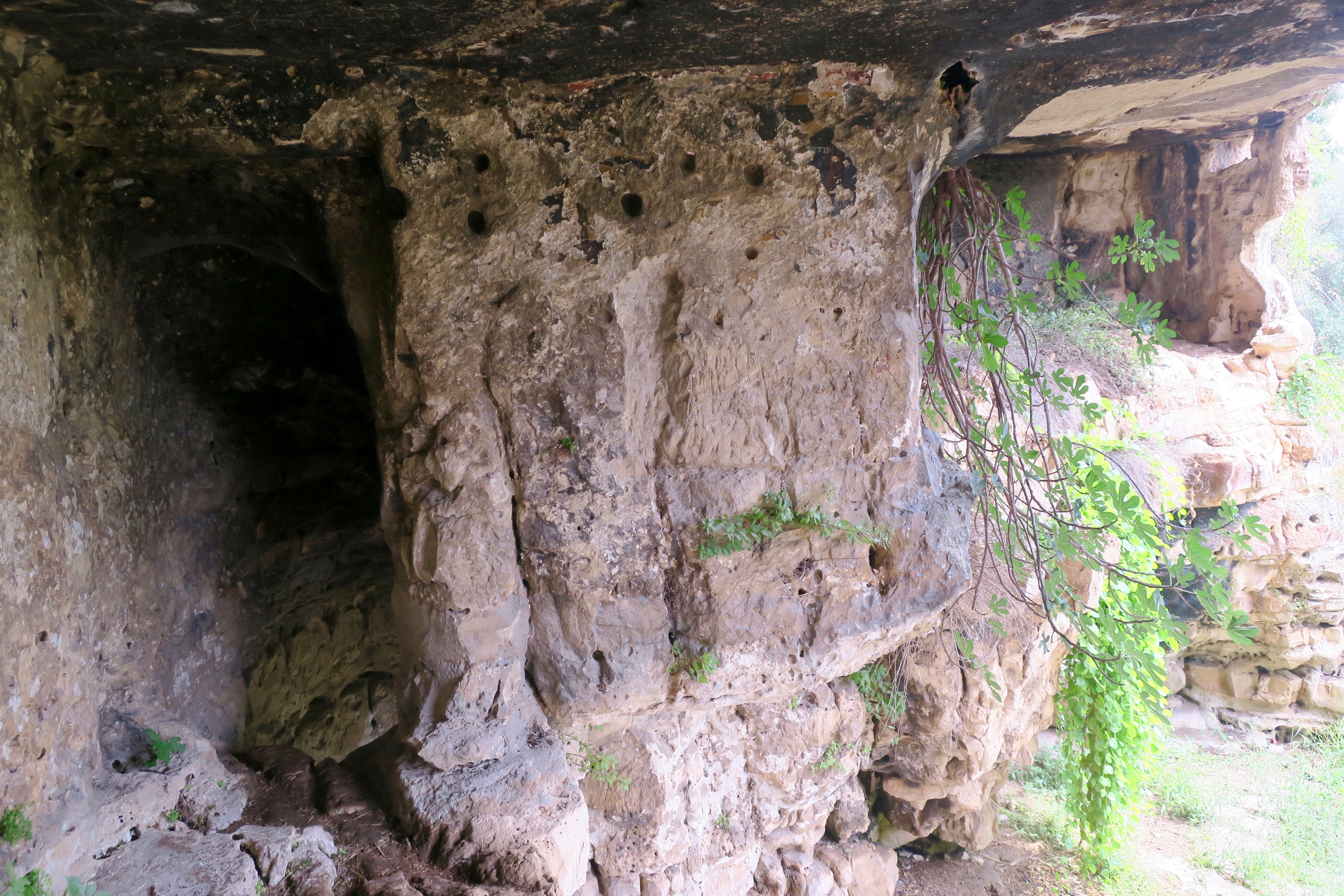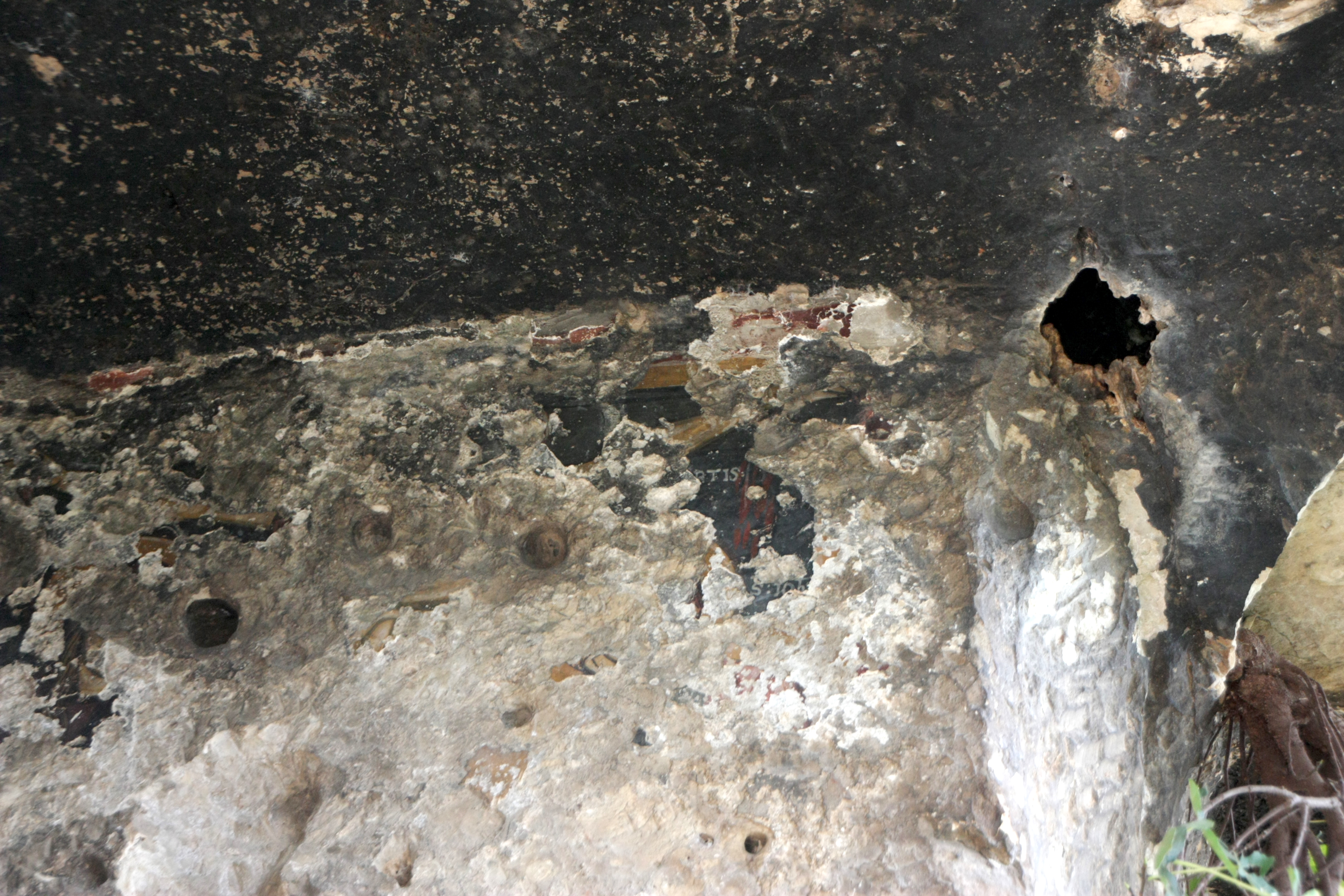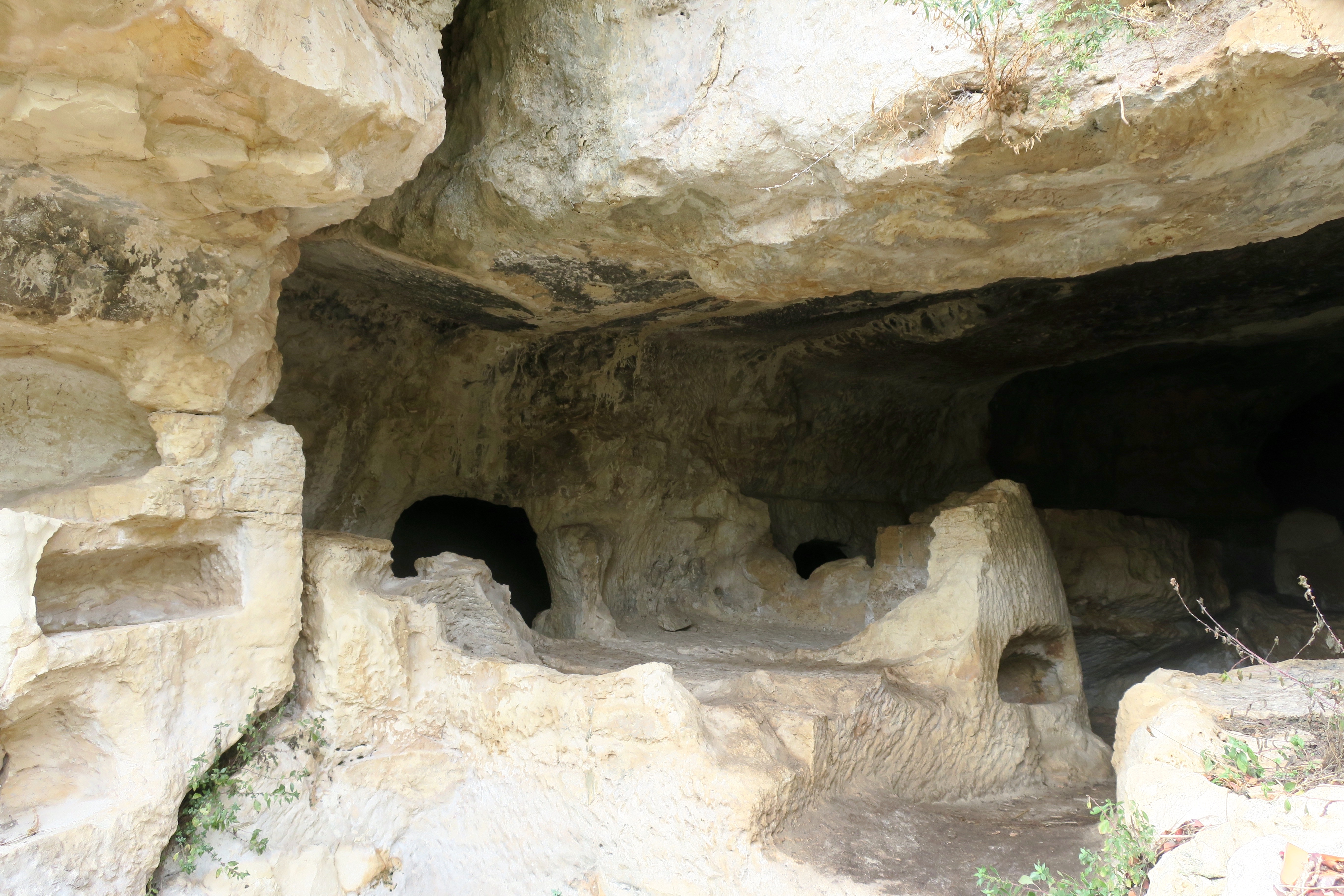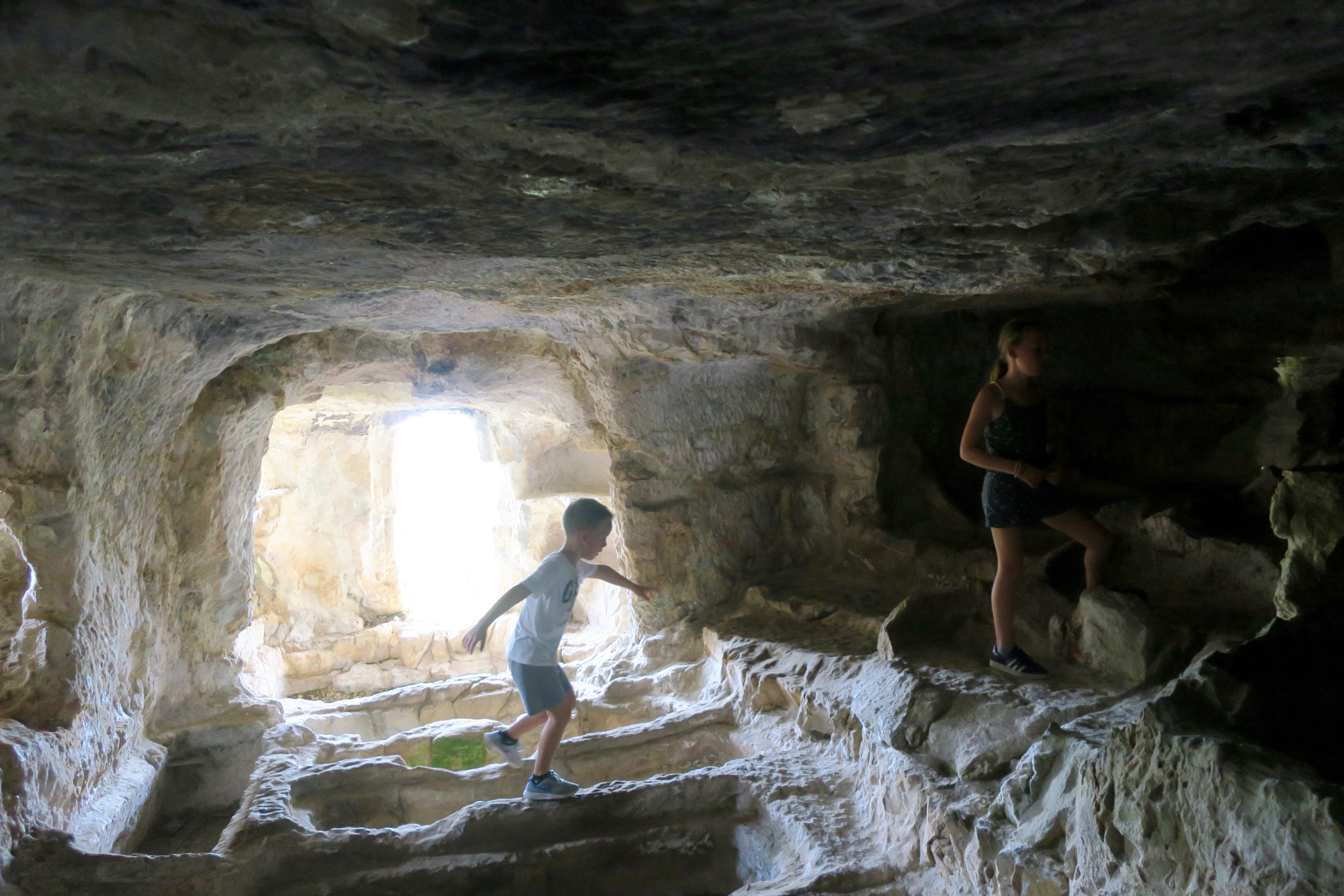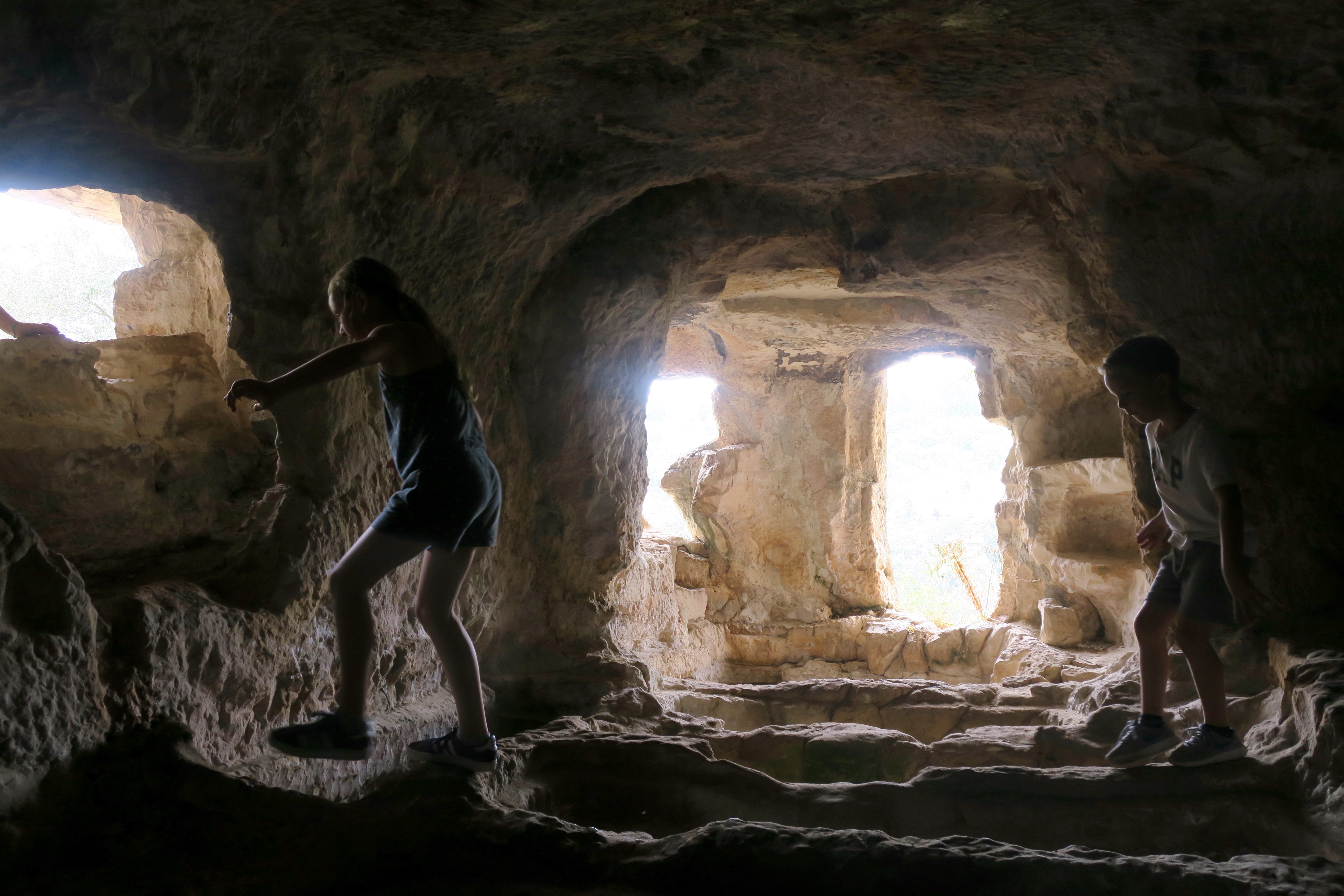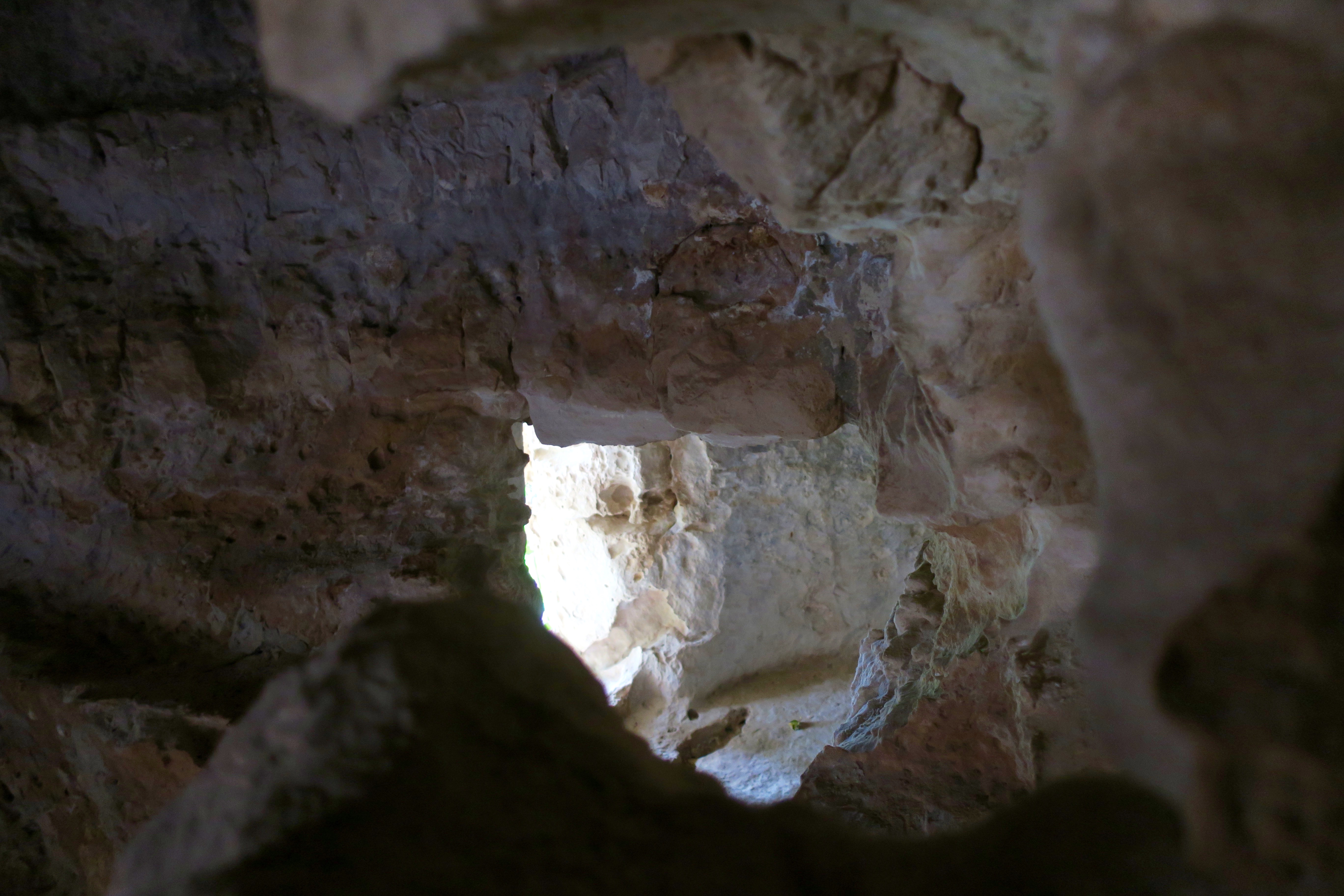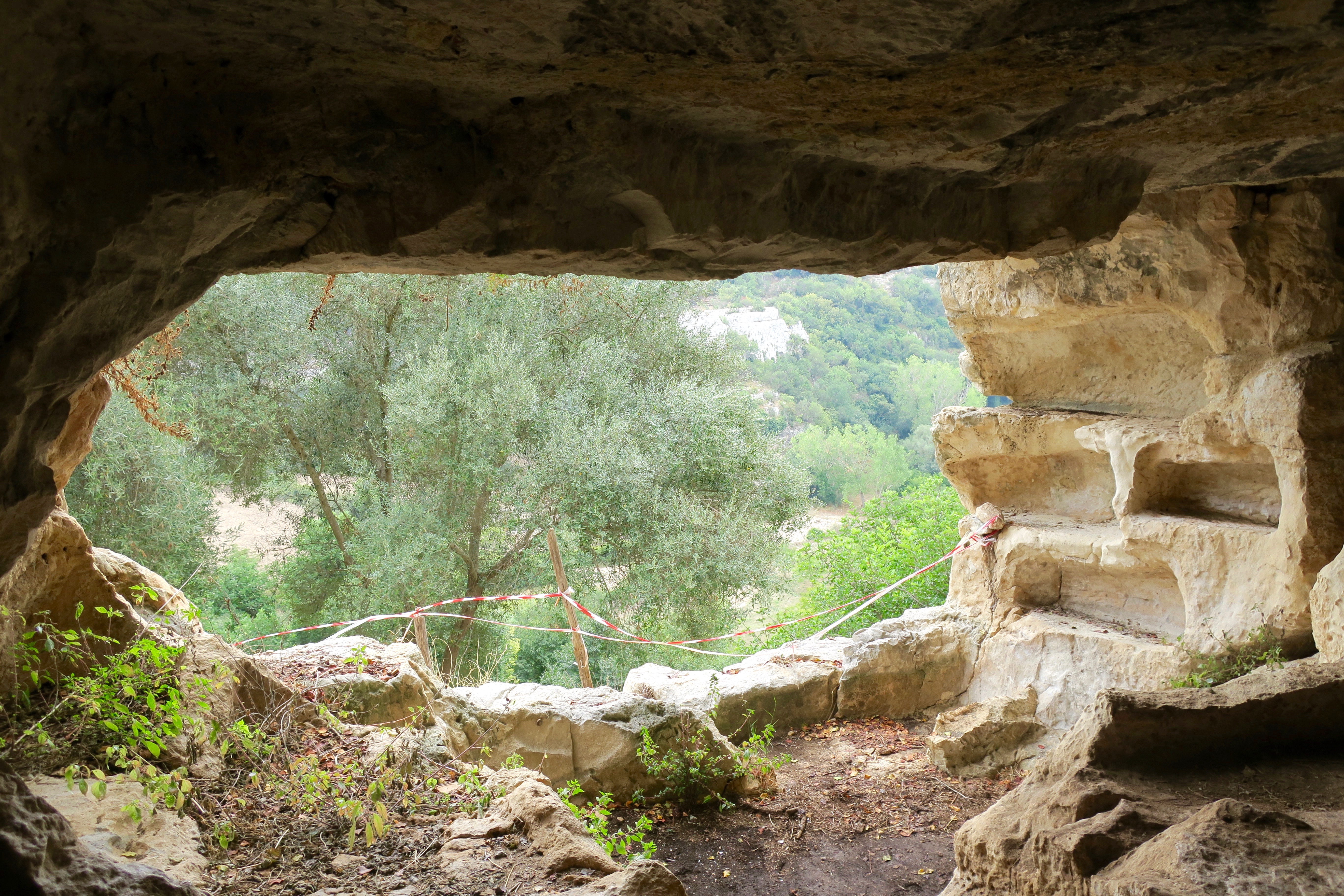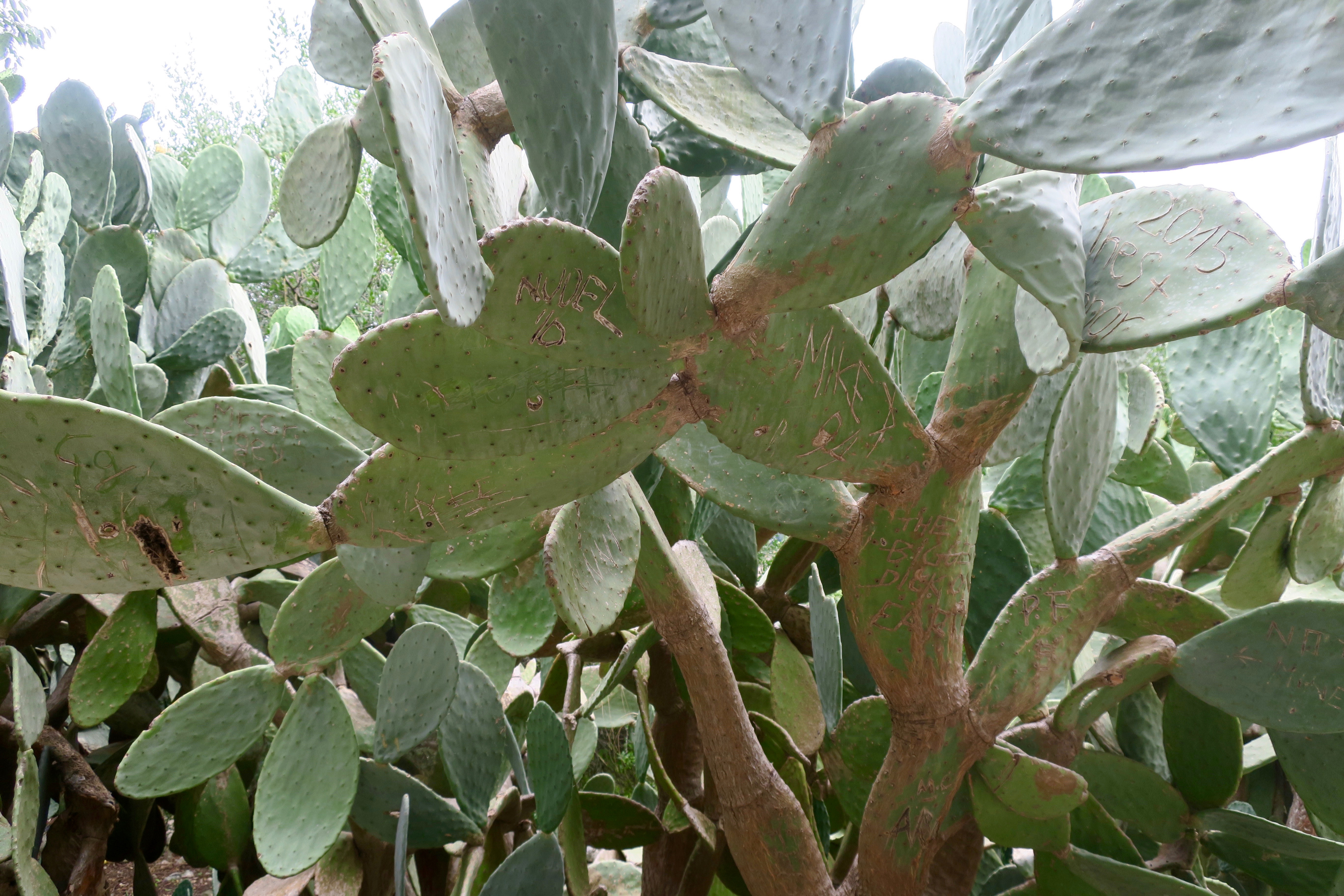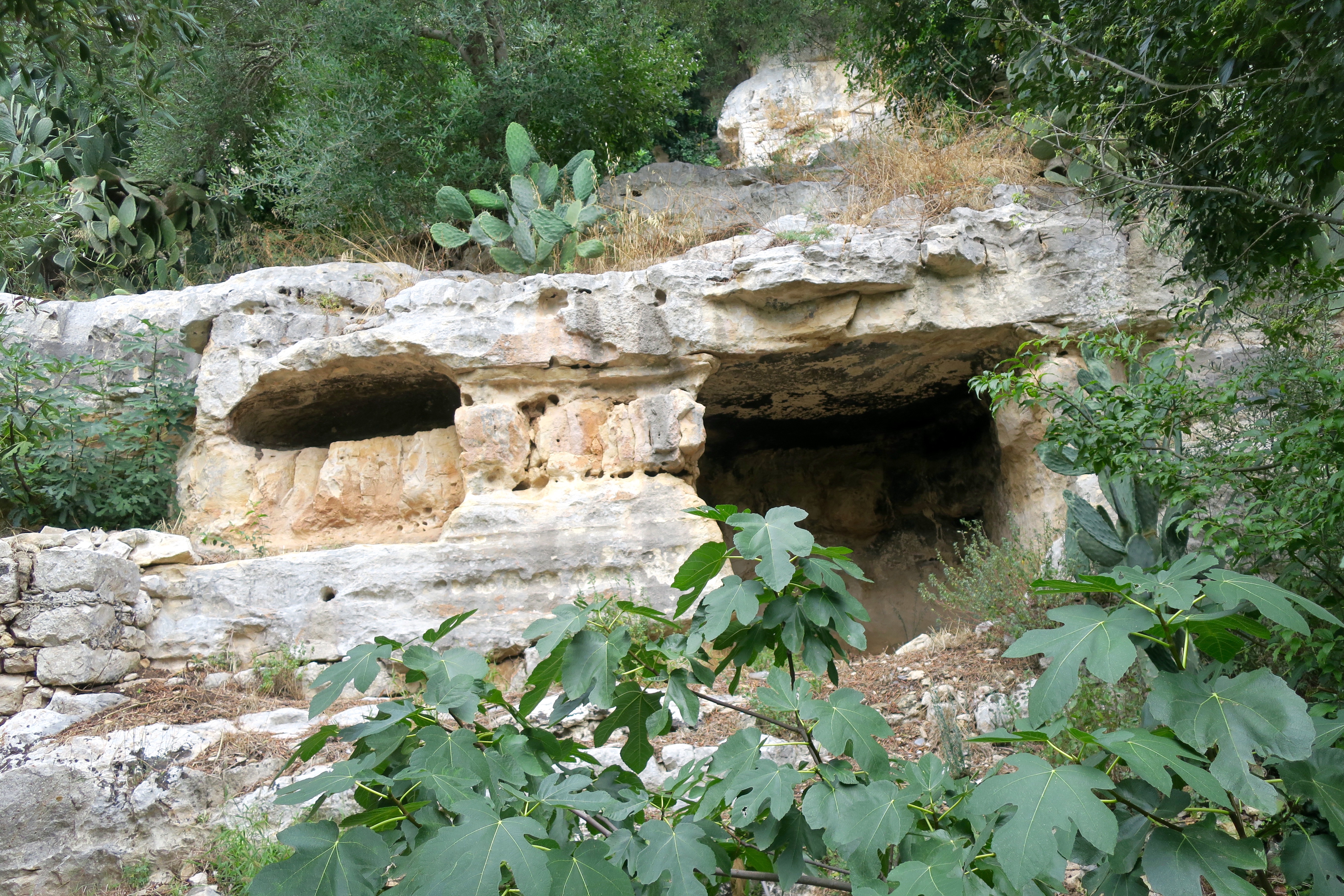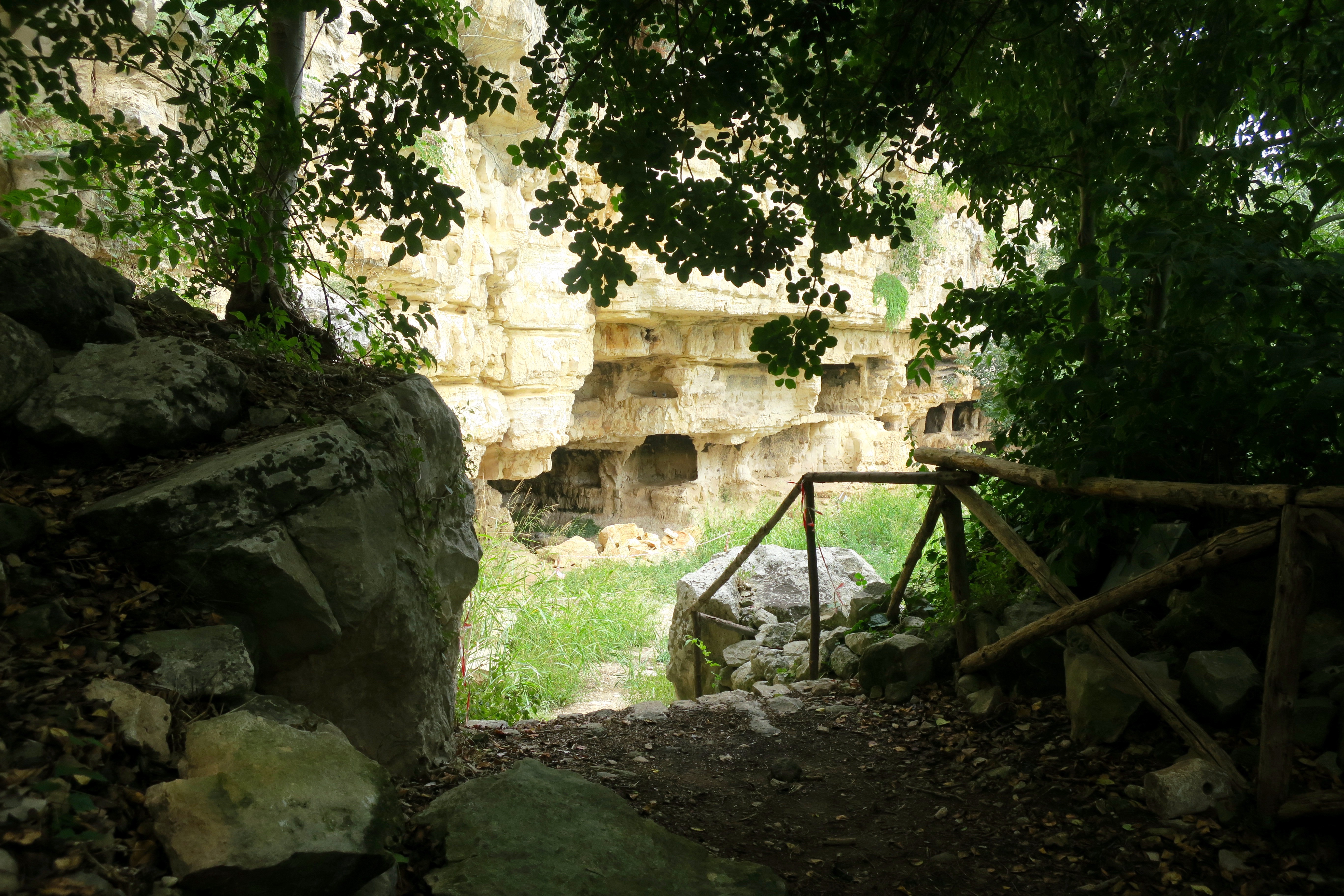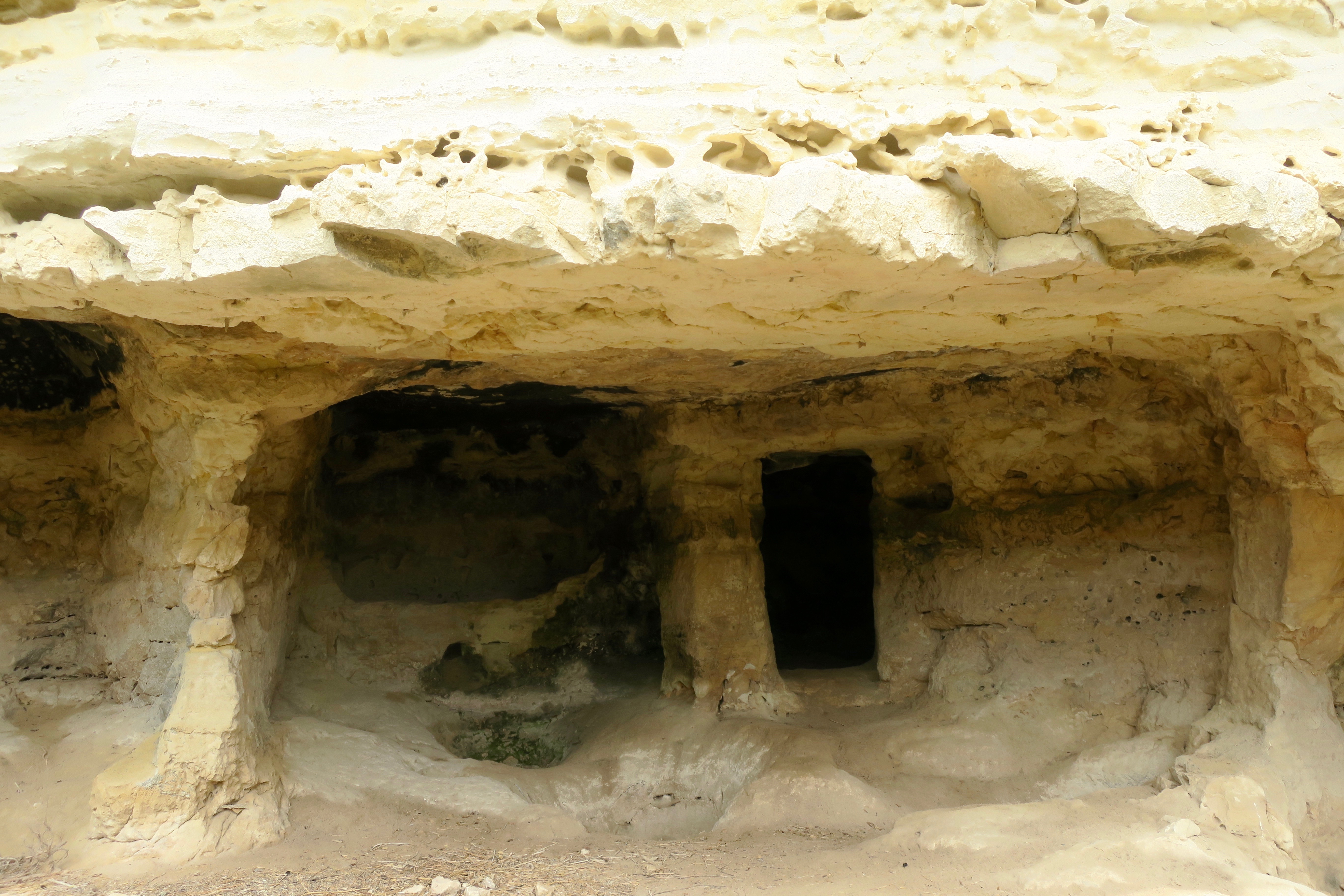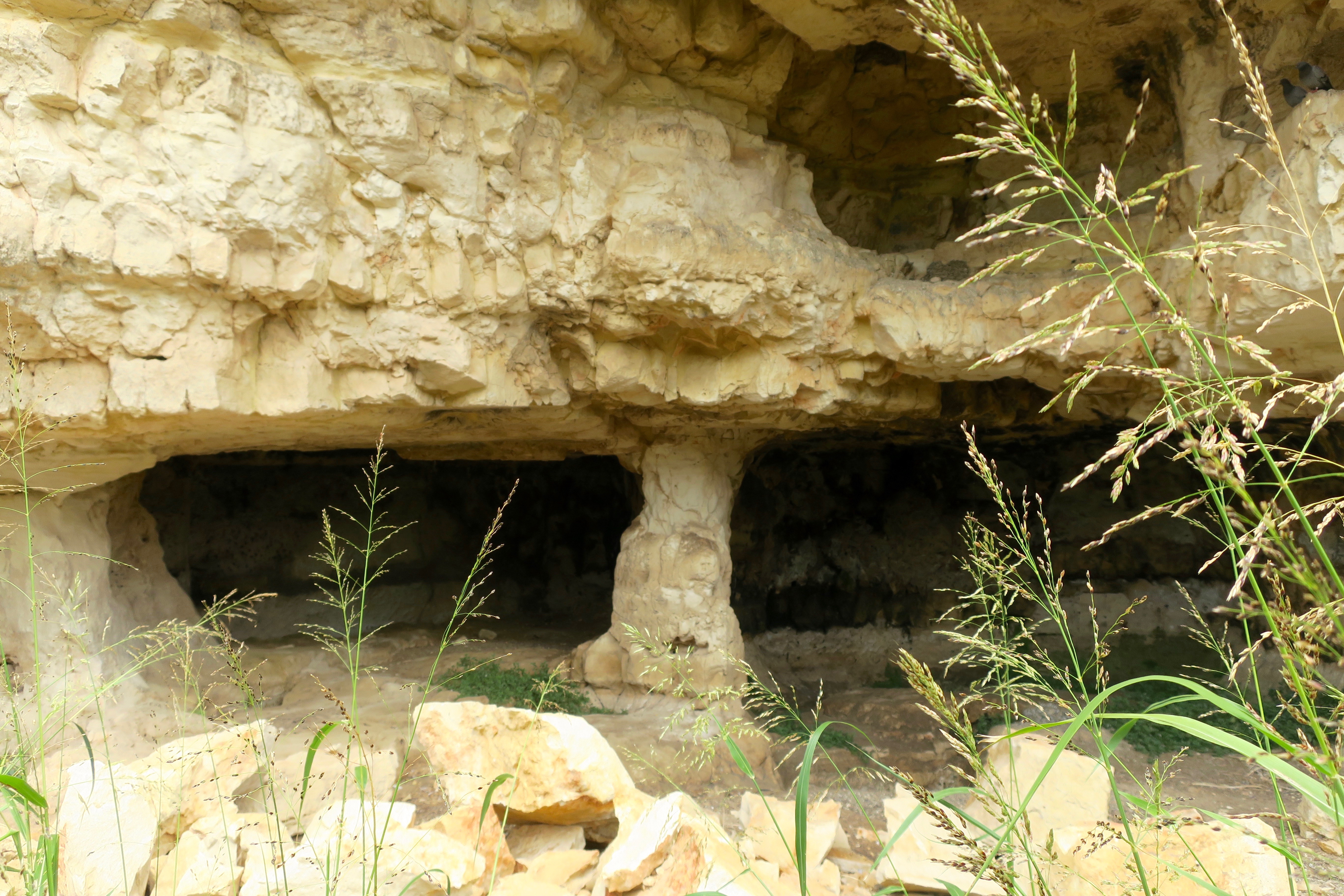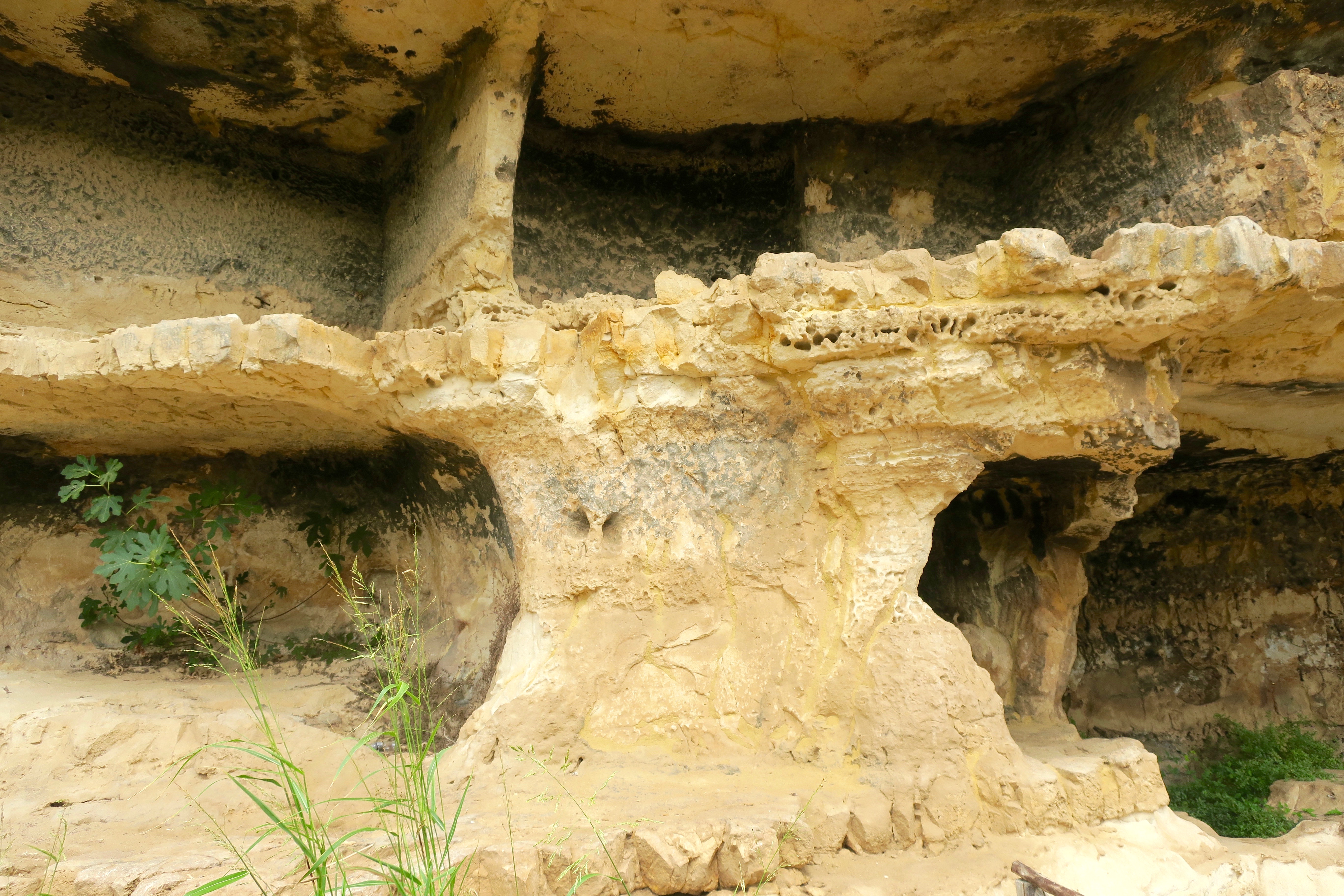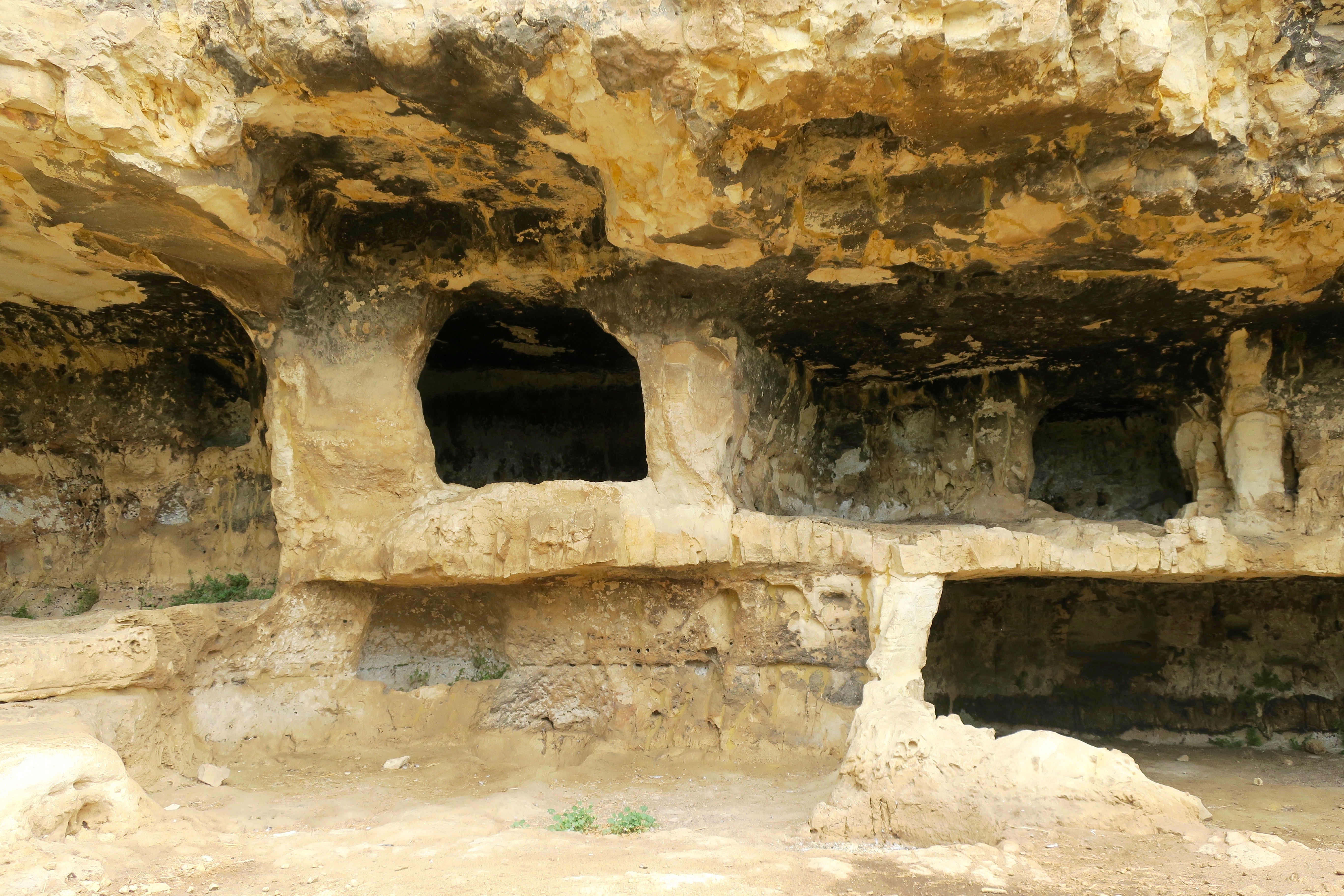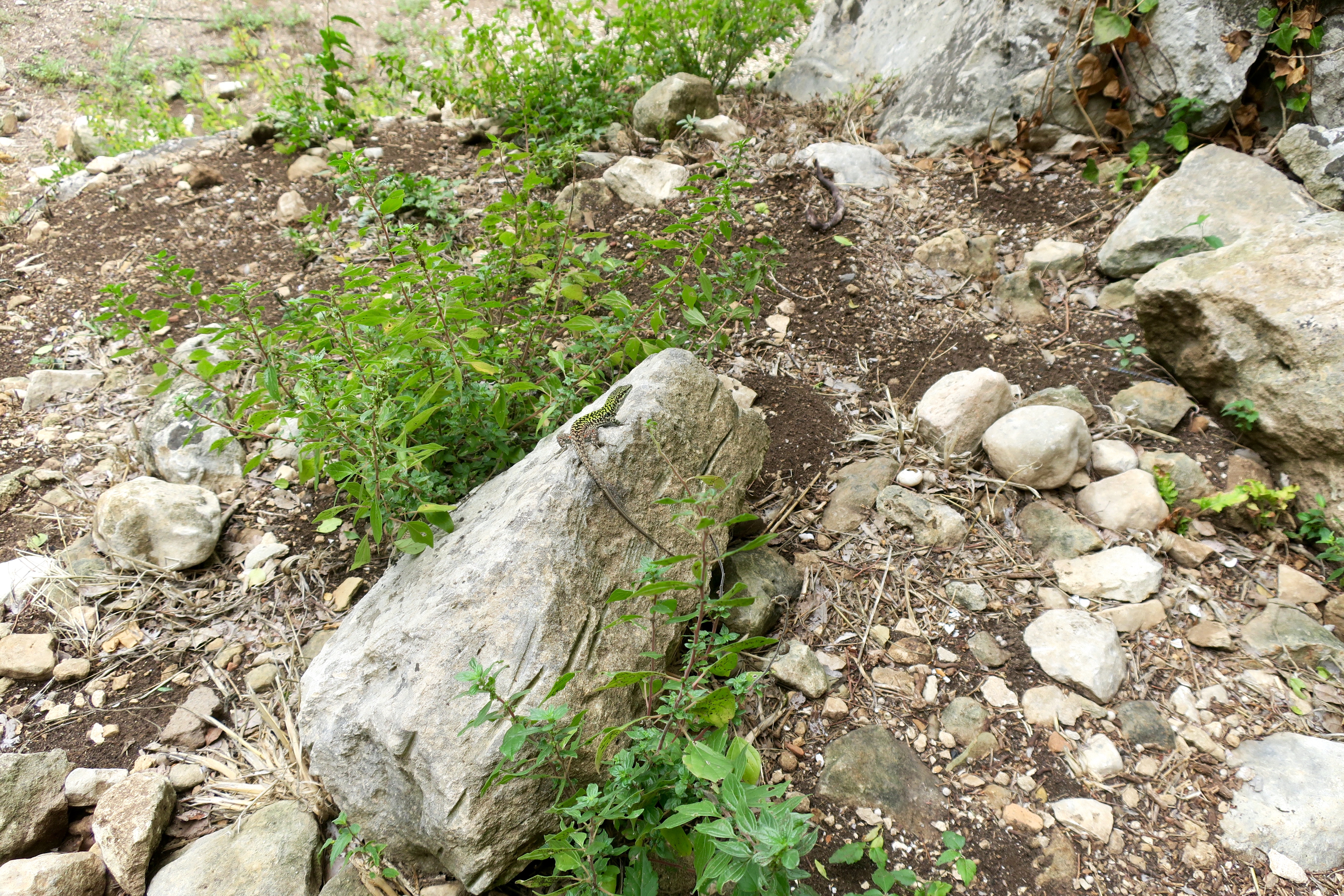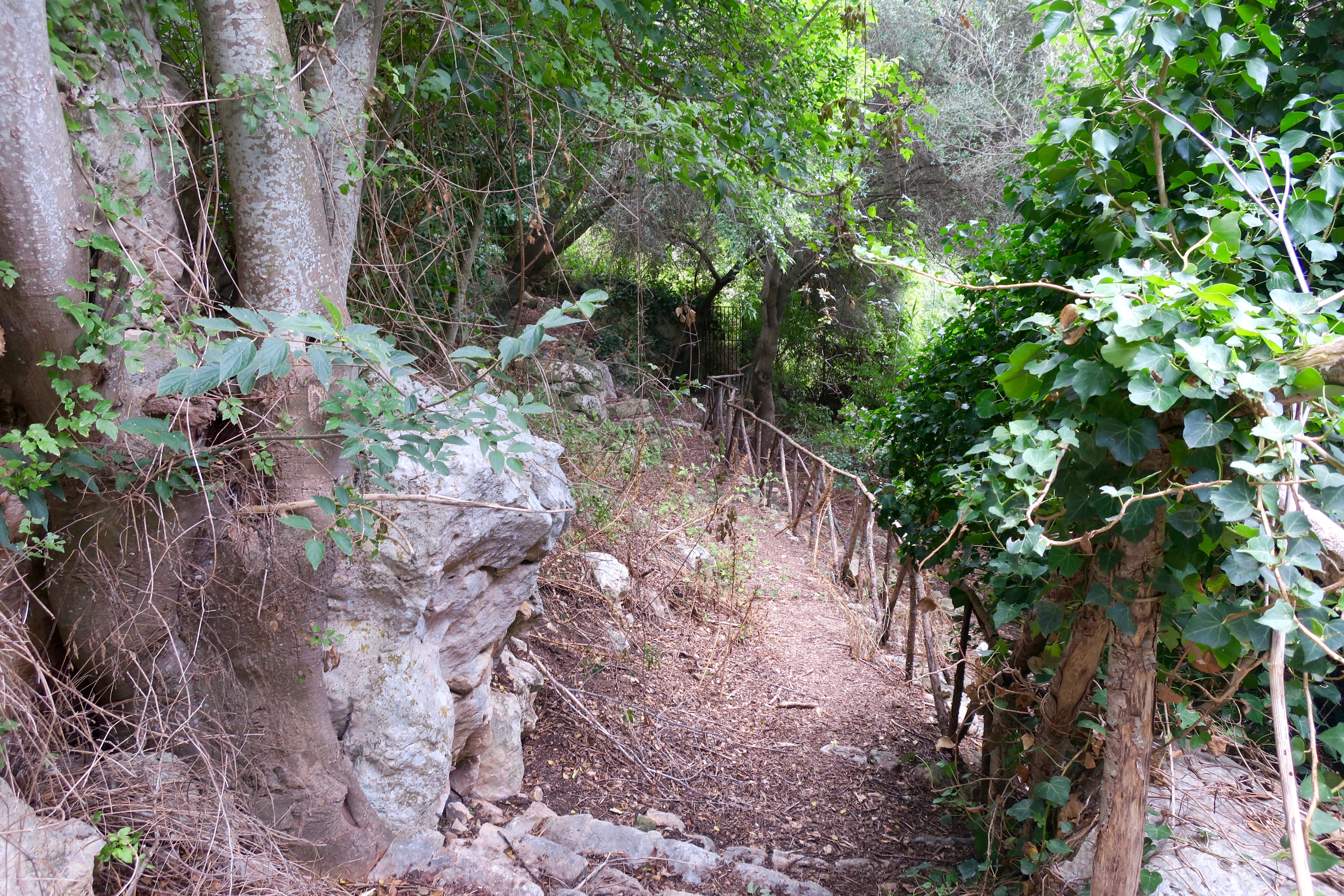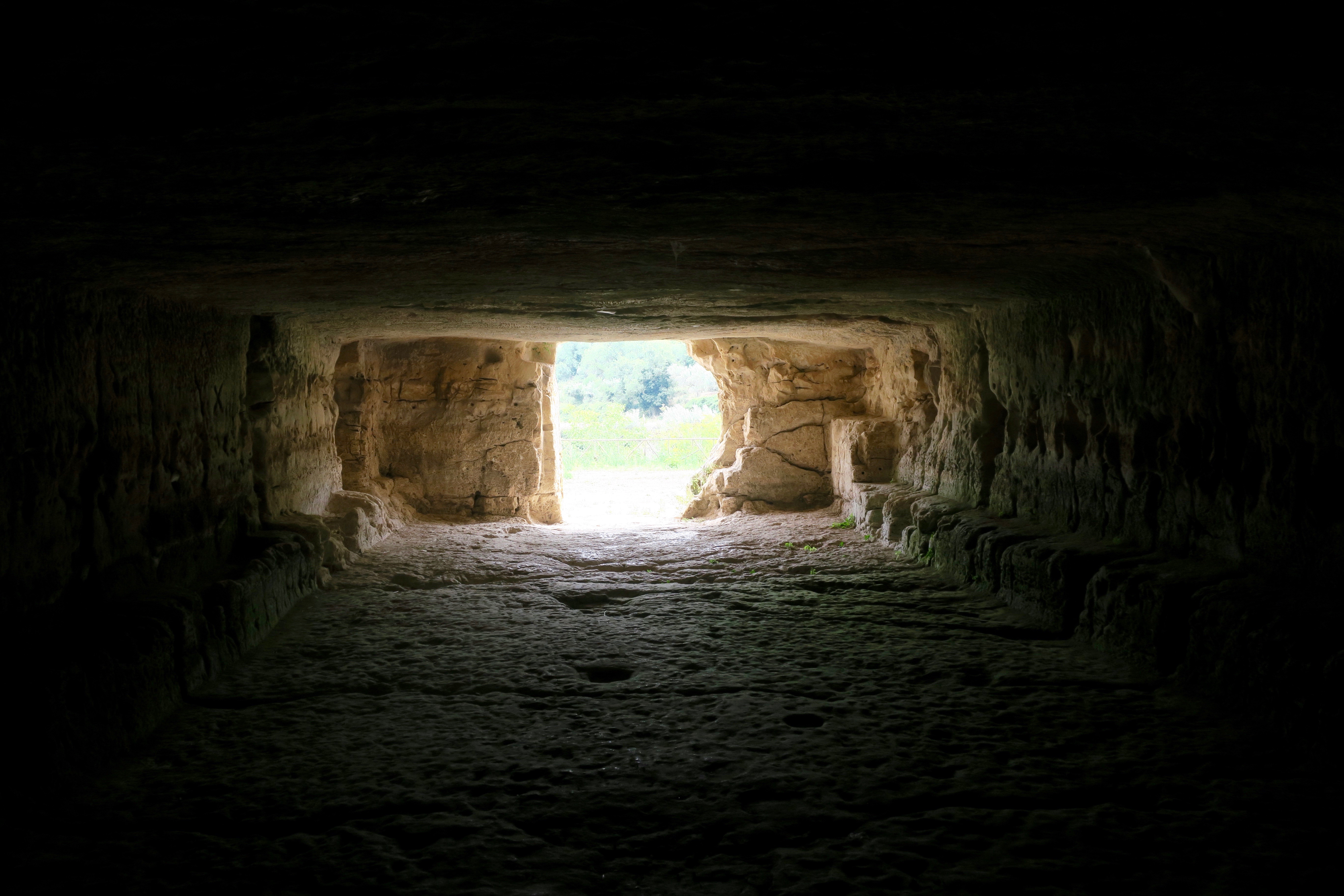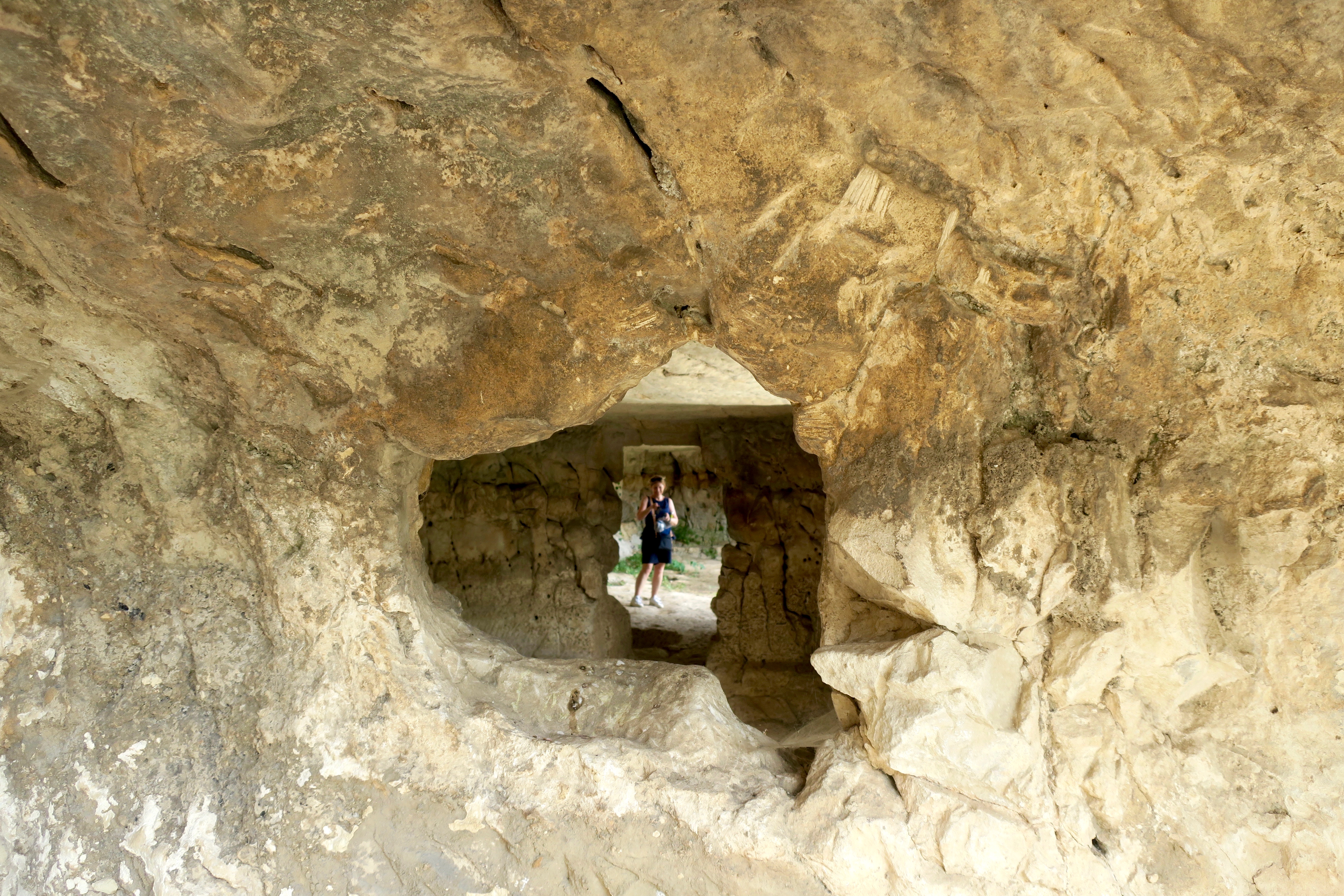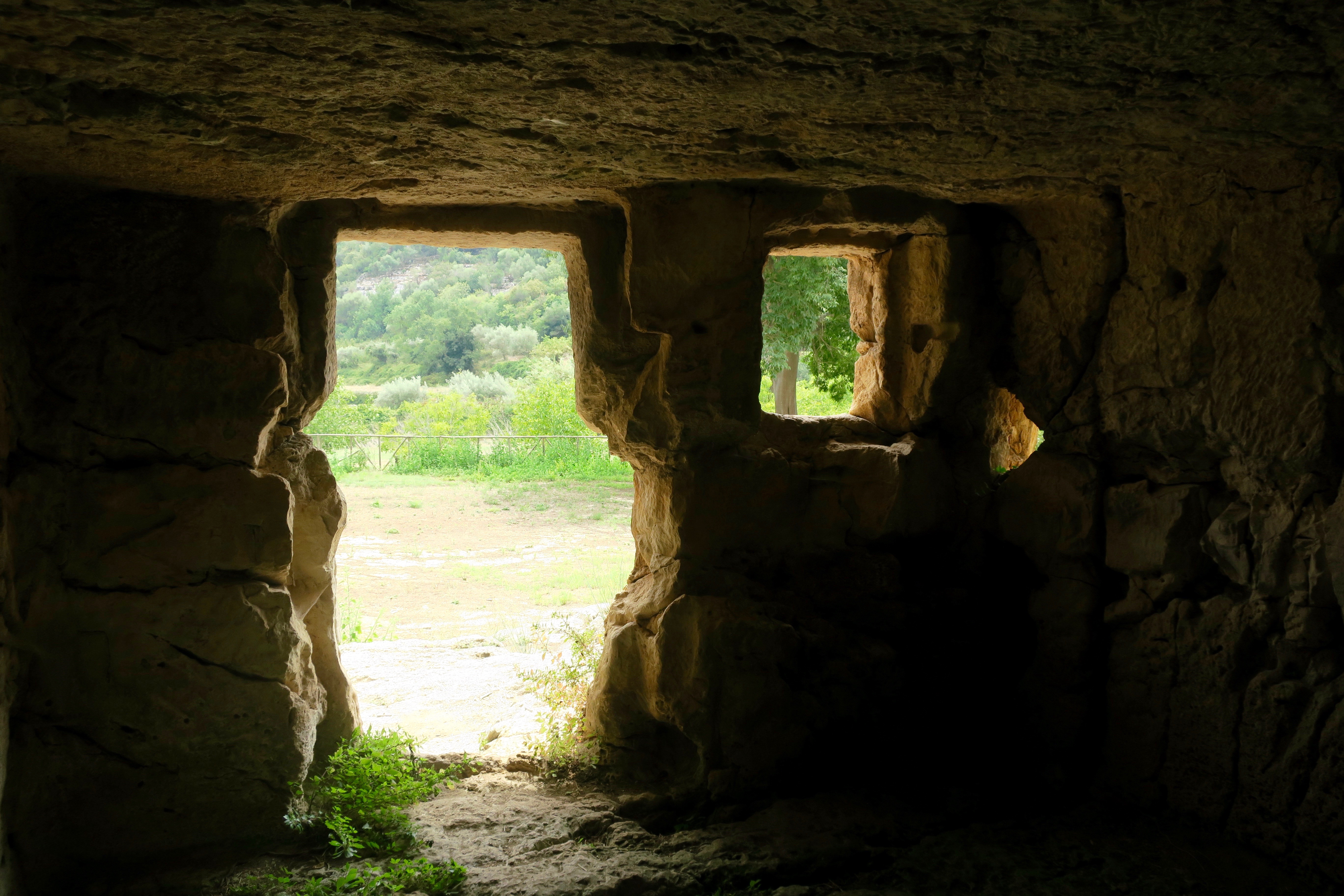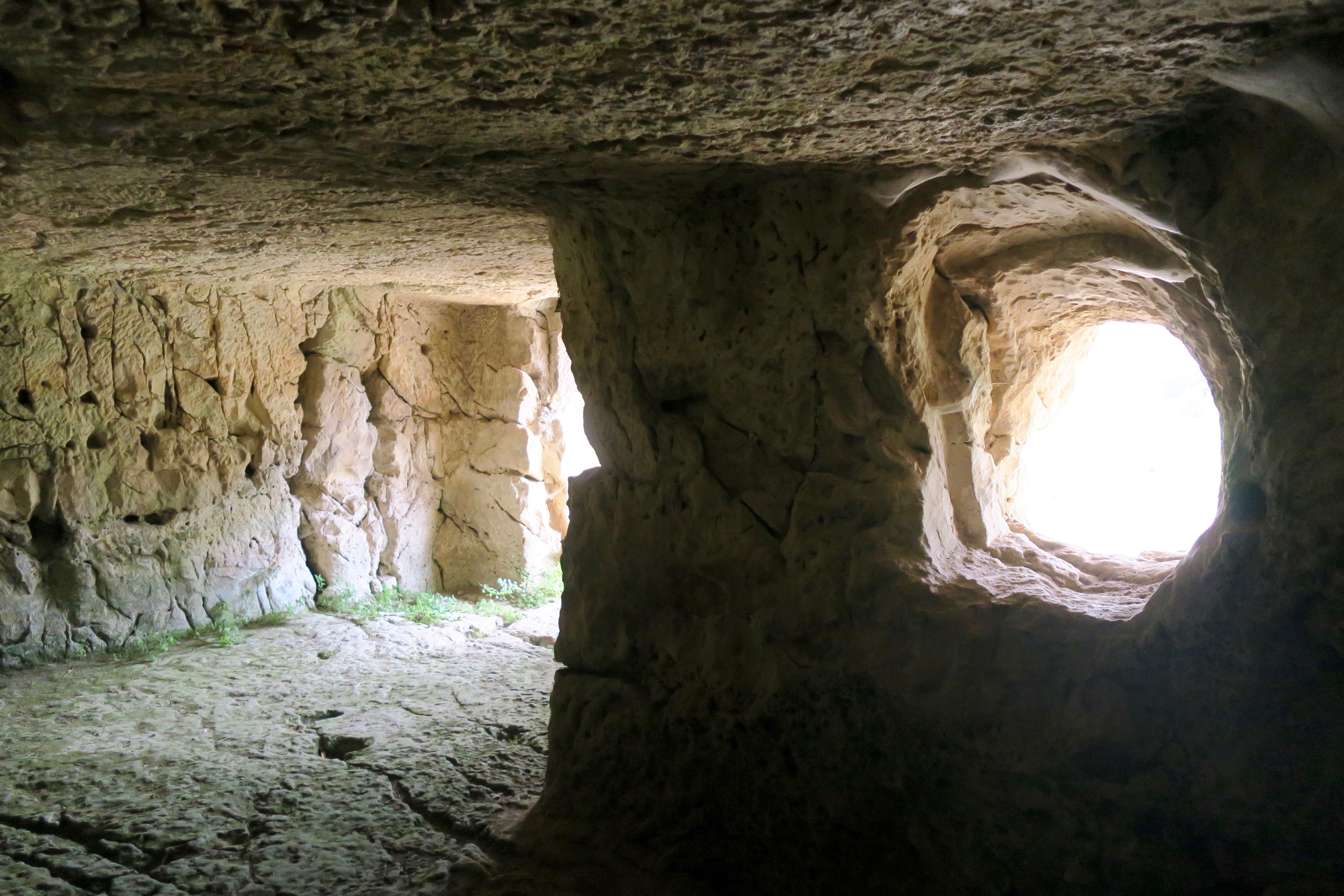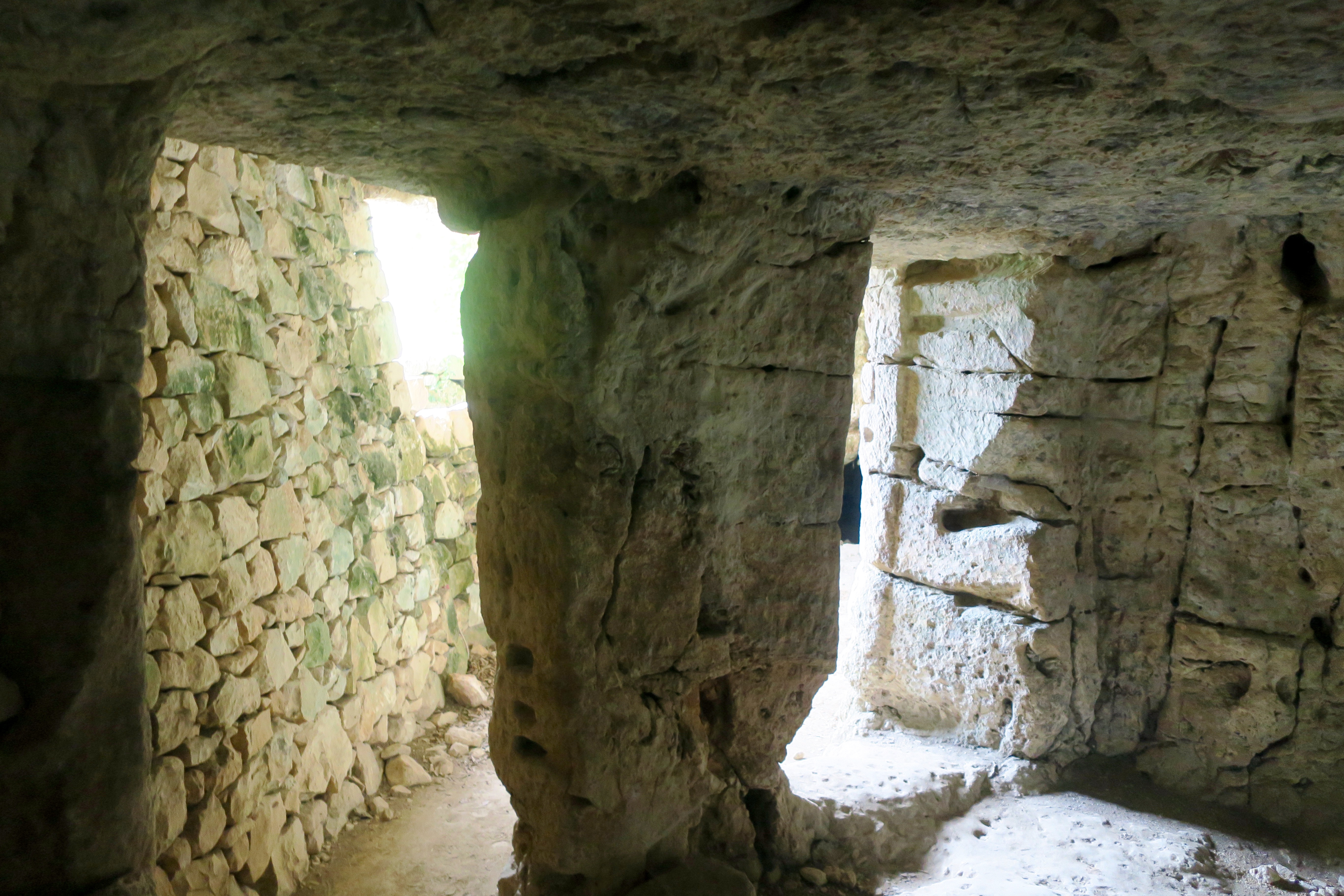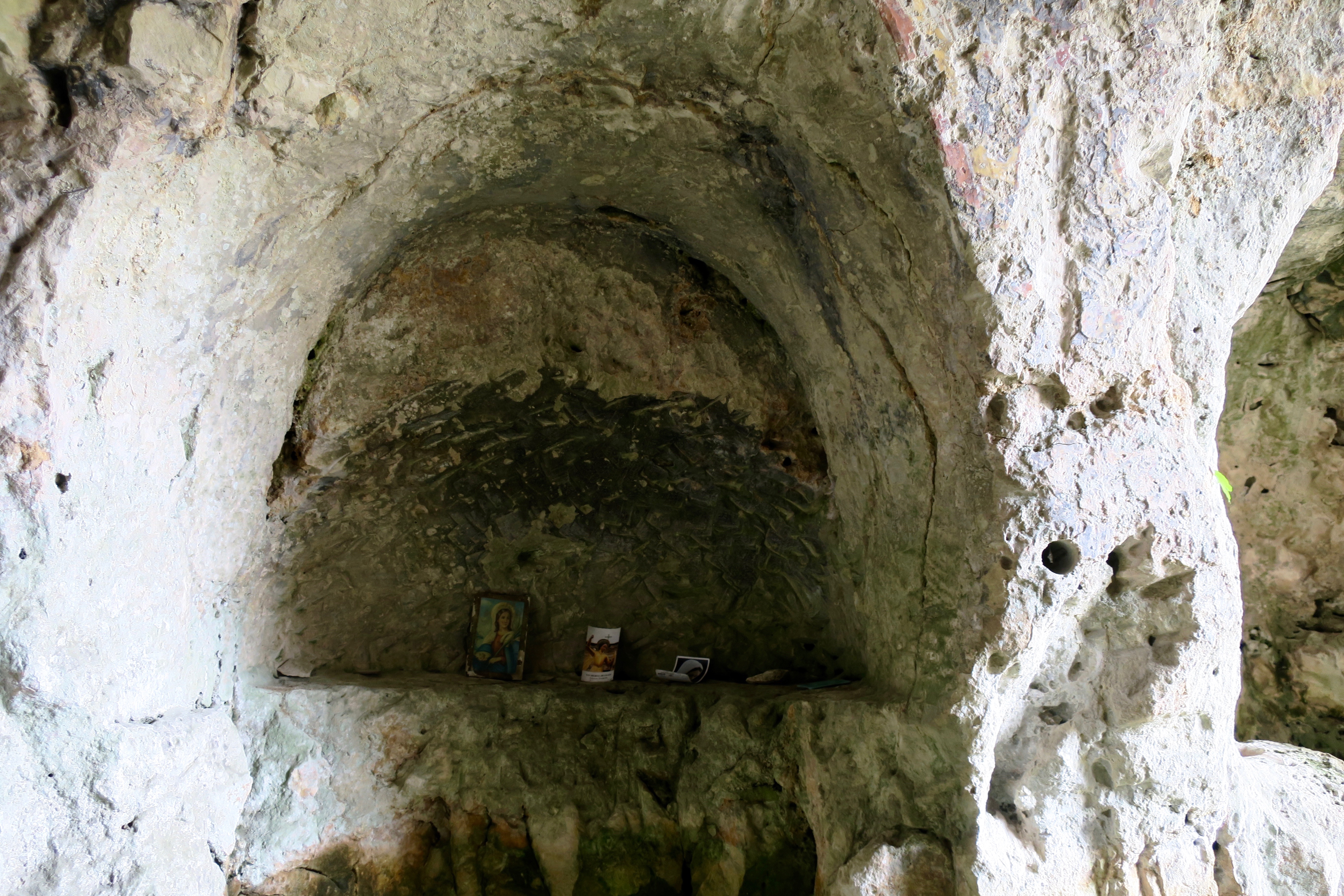The doorway in the rock face opened into a honeycomb of catacombs, hand-carved rock tombs and tunnels, cubicles and niches, an underground depository for the dead. All now dissolved, evacuated, long gone and undead, a dormitory of empty beds, a newfangled airbnb ghost town opportunity.
The Cava Ispica is a 13km gorge between Modica and Ispica where the remains of prehistoric necropoleis, Christian catacombs, rock oratories, monastic hermitages can still be found in the steep sides of the valley. They date from the early Bronze Age to the 14th century, with some caves still inhabited up until the 19th century. We’d earlier visited the lower valley near Ispica at Parco Forza, but hadn’t been able to explore very far. This time we were in the upper valley near Modica where we began our walk at the Larderia Catacombs.
“At the beginning of the Cava rises a small relief that contains the largest sepulchral cave of Sicily… it is composed of three parallel naves, the central one is the longest, the side ones have small caves, all more or less full of niches. I counted 450, they are arranged in every sense, of every size and for every age… These three naves have only one entrance.”
Jean-Pierre Houël: Voyage pittoresque des isles de Sicile, de Lipari et de Malta, 1782/87
The Cava d’Ispica lies 11km east of Modica. It is a deep gorge 13km long which follows a river (now usually dry) with luxuriant vegetation (many rare terrestrial orchids in early spring). It is also an interesting place for birdwatchers, who might see sparrow hawks, buzzards, kestrels, jays and colonies of ravens. The sides of the canyon are honeycombed with prehistoric tombs, early Christian rock-hewn churches and medieval cave-dwellings; here the presence of man can be traced from the earliest times to the most recent, although the valley was greatly damaged in the earthquake of 1693.
Just below the entrance are extensive Christian catacombs known as Larderia (4th-5th centuries AD). They extend for some 36m inside the rock and contain 464 tombs. Across the main road is the little church of San Nicola, which contains very damaged traces of late Byzantine (possibly early Norman) frescoes. A path near here leads along the dry riverbed to Baravitalla, with tombs dating from the Castelluccio period (1800 BC) and one with a design of pilasters on its facade.
From the entrance a gravel road (c.400m) leads past numerous caves, including some on more than one storey, ruined by the earthquake. Outside the enclosure an overgrown path runs along the valley passing numerous rock-tombs and dwellings, including the so-called Castello on four floors.
Ellen Grady: Blue Guide Sicily
We confined our explorations to the area within the Parco Archeologico.
At almost every turn we met great communities of prickly pears.
And paths through the undercliff overhung with fig and carob trees.
A view across the valley to the rocky outcrop of the Chiesa rupestre della Spezieria.
Looking south down the verdant gorge towards Ispica – holm oaks, plane trees, carobs, olives, figs, persimmons, walnuts, pomegranates, medlars, apricots and grapevines as far as the eye can see.
And countless rock-carved hollows: windows, doors, cellars, sinks…
Chiesa rupestre di Santa Maria
(rock-cut church of St Mary)
Up the stairs to the next level.
In the cave church of St Mary… The façade is collapsed but there is a spiral staircase and
traces of a fresco of crucifixion with a caption in Latin ‘lignum mortis’ and ‘S. Johannes’.
Then next stop the Ipogei del Camposanto, the Hypogeum of the Cemetery, aka the catacombs…
It is apparently a Christian necropolis from the 4th century: on the wall of one of the sepulchres a Christian symbol is engraved. There are a total of 60 earth pits, overlapping niches and a number of sarcophagi carved into the rock. There are two sections, the first section includes 25 tombs arranged in various ways; in the second section, which extends to the north, there are 24 tombs.
Wherein the cave spirits awoke and danced a whirlwind before me…
drawing me in and spinning me round in a trance…
so that when I came to I was inside a Barbara Hepworth sculpture.
This place is redolent of history and so too it recalls my own 60 years ago in Bluebell Woods (now beneath the M66) where we climbed the cliff face on top of the cave to sit on the rocky ledge above…
Walking here is following childhood footsteps to all those secret places where we once found a wild sanctuary away from home, like upstream at Plunge waterfall, or further uphill at the abandoned Scout Moor quarry, or more often on the waste ground behind the estate where we dug pits and built walls around them with the excavated earth, and roofed them with planks and branchwood and whatever scraps we could find. We were always looking to escape, to find our own nesting place.
So that here, now, I see my younger self let loose, free of adult supervision, tunnelling through this labyrinth, running wild in search of a lost paradise, or just a way back to the security of the womb.
And this place was once home to hundreds of inhabitants who occupied the former necropolis, converting the tombs into dwelling places, until most of it collapsed in the great earthquake of 1693.
Fallen caves. Cave complex for housing on multiple levels connected by trapdoors and large stairways collapsed part (XI-XIV century).
“In the boundaries of the territory of Noto, and Spaccaforno there is a very curious and admirable monument, which demands the care of every passionate Traveler: and certainly in observing him he will be happy about the painful toil: from the City of Modica, not further than five, or six miles, in the Cava d’Ispica (the Sicilians call it the Valleys) you can admire a whole City, capable of many thousands of inhabitants, formed of a single piece.”
Journey through all the antiquities of Sicily described by Ignazio Paternò Principe di Biscari, 1781
These caves were used as dwellings in medieval times, most probably re-using the vast burial area which stretched, unbroken, from the Larderia catacombs to the caves themselves and included the Camposanto hypogea.
The cliff face has fallen away. Originally the living areas were on at least five levels, connected by steps cut in the rock or by means of oval-shaped bolt holes. Some of these can still be seen connecting the second and third floors. The living areas were square-shaped caves equipped with all that was necessary: alcoves, store-rooms for food, channels and cisterns cut in the rock for the water supply and niches and cupboards for shelving. This group of caves is similar to those of the Castello, the Capraria and Sant’Alessandra further along Cava Ispica. They are all dug out of the high rocky valley walls and are usually located in naturally fortified areas which dominate and so control the valley below.
These days it’s mostly a home for the lizards. Here’s one on its rock, but look carefully, enlarge the photo, and there’s another hiding lower down on the left, waiting to emerge from under the leaves.
Our path ends at a locked gate, the way prohibited to the valley beyond.
But then down below we discovered the Gymnasium.
A rock-hewn workout zone with side-long seating and ancient inscriptions, secret
handshakes and sworn allegiances to the us & them, inside & outside conundrum.
This whole site is one great complex of hollows and caves, carved tunnels and portholes, passageways from light into darkness and back again, windows like pin-hole cameras, all wrapped in an overgrown wild garden with many secret chambers still hidden away behind dappled screens of green leaf-light.
And in the car park, a single-roomed rock-cut chapel for St Nicholas, its walls and ceiling bearing vestigial traces of ancient frescoes, its alcoves and niches hosting votive offerings and photographs.




